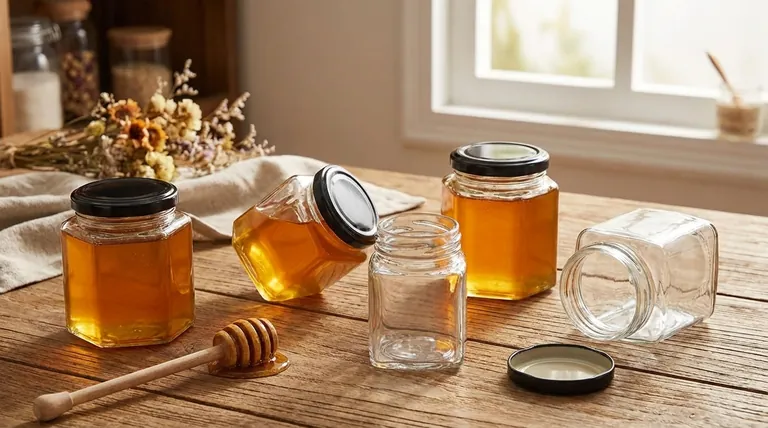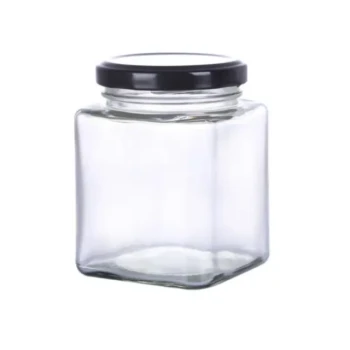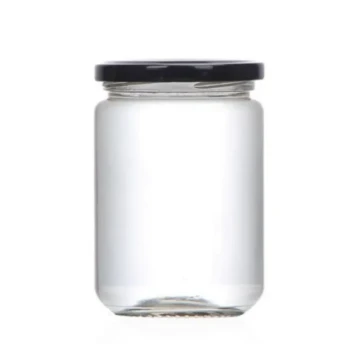For optimal honey storage, you must use a container that is both airtight and made of a non-reactive, food-grade material. The best and most common choices are glass jars or specific types of food-grade plastic, such as PET. The airtight seal is critical for preventing moisture absorption, which can lead to fermentation and spoilage.
The choice between glass and plastic depends entirely on your primary goal. Glass is the definitive choice for long-term purity and flavor preservation, while food-grade plastic offers practicality, safety, and cost-effectiveness for transport and daily use.

Why the Right Container Is Non-Negotiable
Honey is a remarkably stable food, but its quality can be degraded by improper storage. The container you choose is your primary defense against moisture, contamination, and light.
Preventing Moisture Absorption
Honey is hygroscopic, meaning its sugars naturally attract and absorb water molecules from the air. An improper seal allows moisture to enter, increasing the water content.
This excess water can activate dormant yeasts present in the honey, leading to fermentation and spoiling the product. An airtight seal is the most crucial feature of any honey container.
Avoiding Chemical Contamination
Using the wrong material can ruin your honey. Non-food-grade plastics or certain metals can leach chemicals into the honey or cause oxidation.
This not only imparts an undesirable metallic or plastic taste but can also introduce harmful substances. Always ensure your container is explicitly rated as food-grade.
Protecting from Light and Heat
Exposure to direct sunlight and high temperatures can damage honey. UV rays can degrade its enzymes and antioxidants, while heat can alter its flavor and color.
Store honey in a cool, dark place between 65°F and 75°F (18°C and 24°C). While clear glass is excellent, opaque or colored glass can offer an extra layer of protection from light.
Glass vs. Food-Grade Plastic: A Comparison
The two primary materials for honey storage each have distinct advantages suited to different purposes.
The Case for Glass Jars
Glass is widely considered the gold standard for long-term honey storage. It is completely inert, meaning it will not react with the honey or impart any flavors over time.
Its transparency showcases the honey's natural color, and its impermeability provides a perfect barrier against moisture and oxygen.
The Case for Food-Grade Plastic
Modern food-grade plastics are a safe and highly practical option. Look for plastics like PET (polyethylene terephthalate), which is the most common type for honey bottles.
Plastic is lightweight, shatter-resistant, and more cost-effective, making it ideal for shipping, retail, and everyday use (like in a squeeze bottle). Ensure any plastic used is BPA-free.
Understanding the Trade-offs and Common Pitfalls
Choosing the wrong container is the most common mistake in honey storage. Understanding these pitfalls is key to preserving your honey's quality.
The Risk of Improper Materials
Never use containers made of non-food-grade plastic or reactive metals. These materials can cause oxidation and leach unwanted chemicals, permanently altering the honey's taste and safety profile.
The Problem with Second-Hand Containers
Avoid using second-hand jars or bottles, even if they appear clean. Microscopic residues from the previous contents can contaminate the honey, introducing off-flavors or bacteria. Always start with a new, clean container.
The Downside of Long-Term Plastic Storage
While food-grade plastic is safe, it can be slightly more permeable to oxygen than glass over very long periods (many years). For archival storage, glass remains the superior choice to prevent any potential for taste alteration.
Making the Right Choice for Your Goal
Your ideal container depends on whether you are storing honey for a week, a year, or a decade.
- If your primary focus is long-term preservation and absolute flavor purity: Use an airtight glass jar stored in a cool, dark place.
- If your primary focus is daily use, transport, or cost-effectiveness: Use a new, food-grade, BPA-free plastic container like a PET squeeze bottle.
- If your primary focus is harvesting or bulk storage: Use large, sealed, food-grade plastic buckets (often HDPE) for their durability and lighter weight.
Ultimately, selecting a food-grade, airtight container is the single most important step you can take to protect the integrity of your honey.
Summary Table:
| Container Type | Best For | Key Advantage |
|---|---|---|
| Glass Jars | Long-term storage, flavor purity | Inert, impermeable, preserves quality |
| Food-Grade Plastic (PET) | Daily use, transport, cost | Lightweight, shatter-resistant, practical |
| Plastic Buckets (HDPE) | Harvesting, bulk storage | Durable, lightweight, large capacity |
Protect Your Honey Harvest with the Right Supplies
Choosing the correct container is critical for maintaining honey quality from harvest to sale. HONESTBEE supplies commercial apiaries and beekeeping equipment distributors with the durable, food-grade storage solutions needed for success.
We offer a range of wholesale-focused supplies, including:
- Airtight containers and lids for optimal preservation.
- Bulk storage options for efficient harvesting.
- Equipment designed for the demands of commercial beekeeping.
Ensure your honey's integrity—contact our experts today to discuss your wholesale needs!
Visual Guide

Related Products
- Modern Square Glass Honey Jar with Twist Off Lid
- Classic Round Glass Honey Jar with Lid
- Classic Drum Shaped Glass Honey Jar with Airtight Lid
- Hexagonal Glass Honey Jars with Metal Lug Caps Elegant Versatile Packaging
- Squeezable No-Drip Beehive-Shaped Honey Jars with Flip-Top Cap
People Also Ask
- What does the term 'nectar shake' or 'shaking nectar' indicate? A Key Sign of a Strong Nectar Flow
- What are the basic parts of a standard beehive? A Complete Guide to Langstroth Hive Components
- How to tell if there is a honey flow? Spot the 4 Key Signs for a Bountiful Harvest
- What precautions should be taken when operating the honey mixer? Essential Steps for Safe & Efficient Honey Processing
- Can I extract uncapped honey? Avoid spoilage by trusting the bees' quality control.



















